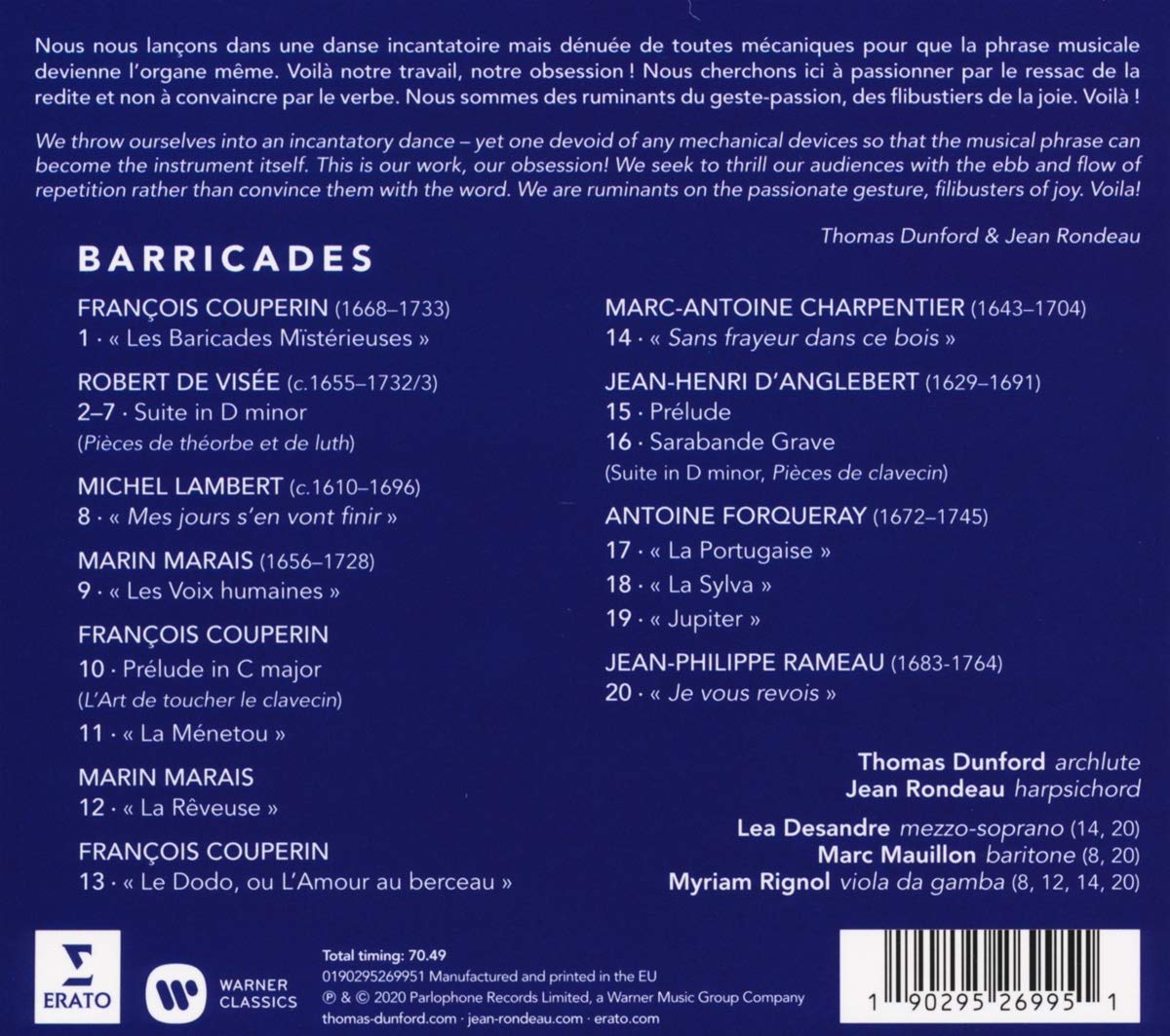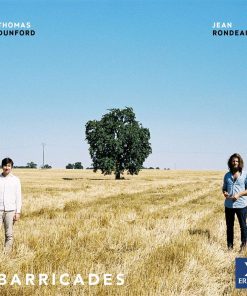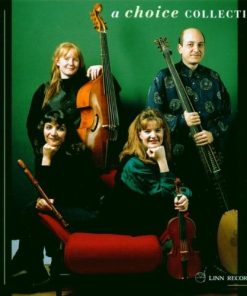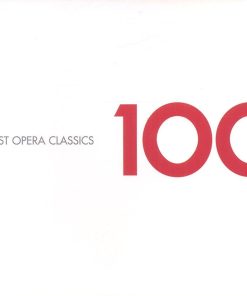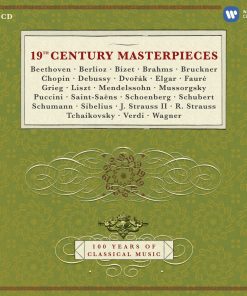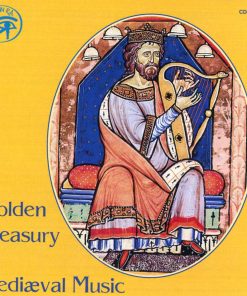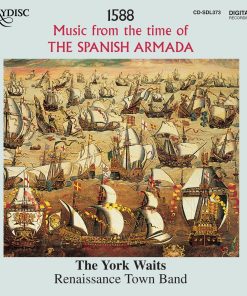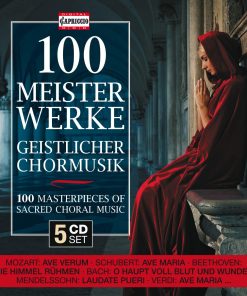BARRICADES – THOMAS DONFORD, JEAN RONDEAU WARNER CLASSICS
$ 19,99 $ 11,99

The repertoire on the album features music from the court at Versailles during the reigns of Louis XIV and Louis XV: François Couperin (1668 – 1733), Robert De Visée (v. 1650-1665 – after 1732), Michel Lambert (1610-1696), Marin Marais (1656 – 1728) Marc-Antoine Charpentier (1643-1704), Jean-Henry D’Anglebert (1629- 1691) Antoine Forqueray (1672-1745) Jean-Philippe Rameau (1683-1764).
“Both of us have grown up with this music from the cradle of our earliest infancy; […] It is music that allowed us to become what we are, while at the same time encouraging us to question things constantly. […] Now, playing the music – because, as we all know, we play rather than make music – has become a part that each of us plays, played here as a double act. Each one for himself, with his instrument as a crucible, and at the same time each of us for the other, since after all we are engaged in a performance. We don’t know how to play alone. This is the paradox of the game of music: a cross between extremely precise rules for how to play – how to read this cryptic language we spend our life deciphering, like hieroglyphs – and the magic to which it leads us – its at once organic and dreamlike dimension. This is where we find our shared expression: in a shared ordeal, we still don’t fully understand. […] Our playing goes far beyond dialogue: for us, it is not about responding to each other so much as it is about questioning and inviting our listeners to join us in this exploration with no answer or resolution. […] So we brood over this music, we play it endlessly, and we play endlessly. That is precisely what we do in this programme composed almost exclusively of rondos (refrain–verse–refrain–verse), and pieces with repeats in binary form.” – Jean Rondeau

Though still both around 30, Dunford and Rondeau are already steeped in this rich and subtle repertoire, and play it like they own it …Both also like to indulge in some slowish tempos, but Dunford’s way with a piece like Marais’s Les voix humaines captivates with its intense tenderness, while Rondeau has a habit of placing every note with immensely satisfying rightness, sweetness and precision. –GRAMOPHONE


1 COUPERIN, F: Second Livre de Pièces de Clavecin, Sixième Ordre: Les Baricades Mïstérieuses
ROBERT DE VISEE
2 Pièces de Théorbe Et de Luth, Suite No. 7 en RÉ Mineur: I. Allemande “La Royale
3 Pièces de Théorbe Et de Luth, Suite No. 7 en RÉ Mineur: II. Courante I
4 Pièces de Théorbe Et de Luth, Suite No. 7 en RÉ Mineur: III. Sarabande
5 Pièces de Théorbe Et de Luth, Suite No. 7 en RÉ Mineur: IV. Gavotte
6 Pièces de Théorbe Et de Luth, Suite No. 7 en RÉ Mineur: V. Chaconne
7 Pièces de Théorbe Et de Luth, Suite No. 7 en RÉ Mineur: VI. Mascarade, Rondeau
MICHEL LAMBERT
8 Mes Jours S’en Vont Finir
MARIN MARAIS
9 Pièces de Viole, Livre II, Suite No. 3 en RÉ Majeur: Les Voix Humaines
FRANCOIS COUPERIN
10 L’art de Toucher Le Clavecin: Premier Prélude
11 Second Livre de Pièces de Clavecin, Septième Ordre: I. La Ménetou. Rondeau, Gracieusement, Sans Lenteur
MARIN MARAIS
12 Pièces de Viole, Livre IV, Suite D’un Goût Étranger: La Rêveuse
FRANCOIS COUPERIN
13 Troisième Livre de Pièces de Clavecin, Quinzième Ordre: II. Le Dodo Ou L’amour Au Berceau. Rondeau, Sur Le Mouvement Des Berçeuses
MARC-ANTOINE CHARPENTIER
14 Sans Frayeur Dans Ce Bois, H. 467
JEAN-HENRI D’ANGLEBERT
15 Suite No. 3 en RÉ Mineur: I. Prélude
16 Suite No. 3 en RÉ Mineur: VI. Sarabande Grave. Lentement
ANTOINE FORQUERAY
17 Pèces de Viole, Suite No. 1 en RÉ Mineur: V. La Portugaise. Marqué Et D’aplomb
18 Pièces de Viole, Suite No. 5 en Ut Mineur: VI. La Sylva. TRÈS Tendrement
19 Pièces de Viole, Suite No. 5 en Ut Mineur: VII. Jupiter. Modérément
JEAN PHILIPPE RAMEAU
20 Les Fêtes D’HÉBÉ, Act I: “Je Vous Revois” (Le Ruisseau, la Naïade)
Fast Shipping and Professional Packing
Due to our longstanding partnership with UPS FedEx DHL and other leading international carriers, we are able to provide a range of shipping options. Our warehouse staff are highly trained to pack your goods exactly according to the specifications that we supply. Your goods will undergo a thorough examination and will be safely packaged prior to being sent out. Everyday we deliver hundreds of packages to our customers from all over the world. This is an indication of our dedication to being the largest online retailer worldwide. Warehouses and distribution centers can be located in Europe as well as the USA.
Orders with more than 1 item are assigned processing periods for each item.
Before shipment, all ordered products will be thoroughly inspected. Today, most orders will be shipped within 48 hours. The estimated delivery time is between 3-7 days.
Returns
The stock is constantly changing. It's not entirely managed by us since we are involved with multiple parties such as the factory and our storage. The actual stock can fluctuate at any time. Please understand it may happen that your order will be out of stock when the order is placed.
Our policy is valid for 30 days. If you haven't received your product within 30 days, we're not able to issue either a return or exchange.
You are able to return a product if it is unused and in the same condition when you received it. It must also still remain in the original packaging.
Related products
MUSIC CDS
MUSIC CDS
MUSIC CDS
MUSIC CDS
MUSIC CDS
MUSIC CDS
MUSIC CDS
MUSIC CDS

